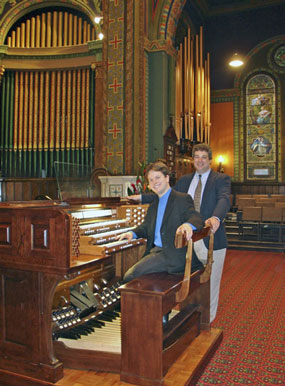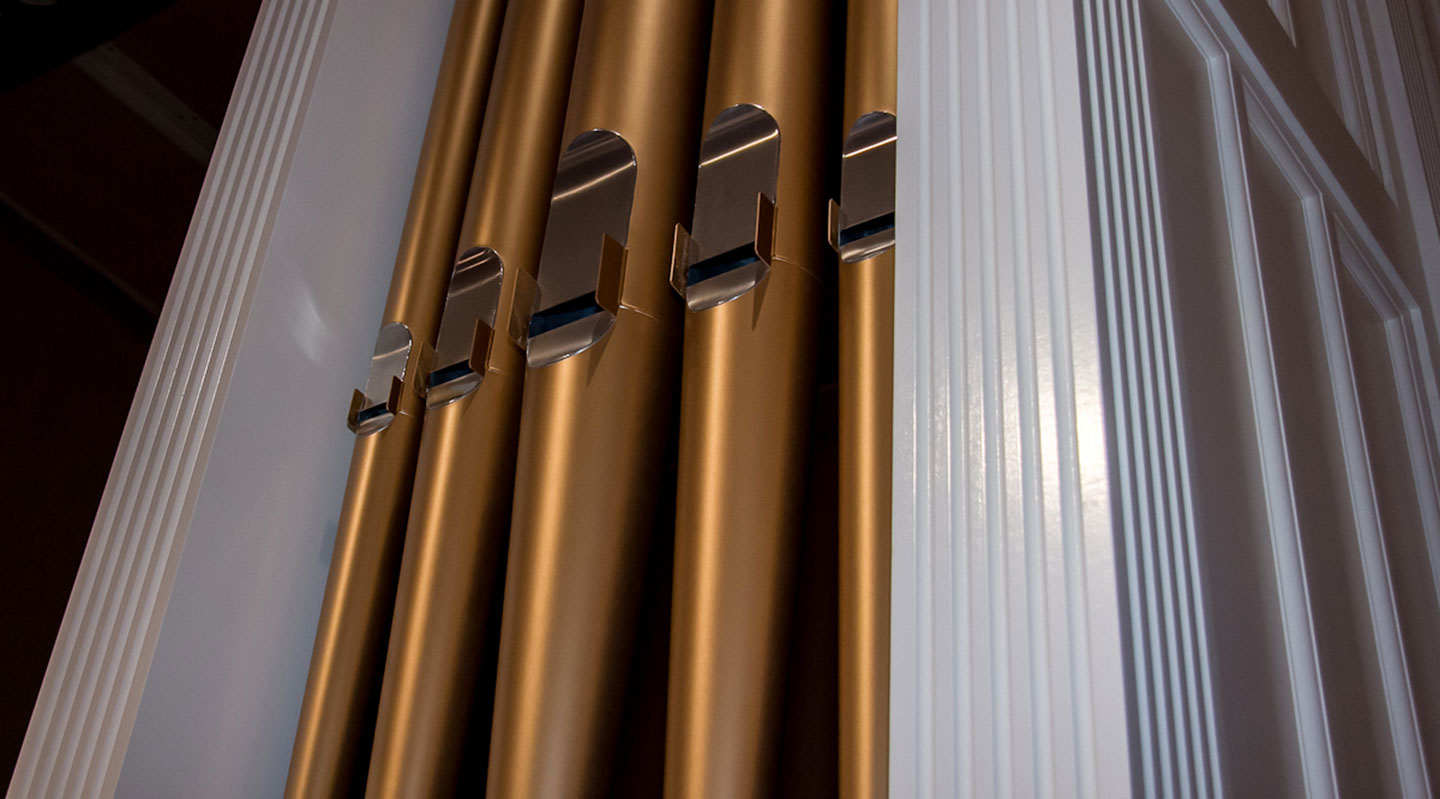Murphy’s Top Ten
This article, written by Shen Shellenberger, is the culmination of an interview with Patrick J Murphy conducted by Ms. Shellenberger for the national newsletter of “Partners for Sacred Places”.
“No two pipe organs are alike,” Murphy says. Even if they are identically constructed, their physical installations and environments plus the handcrafted aspects, make each one unique. And because of that it can be hard to come up with hard-and-fast observations about every pipe organ. But he can offer some general rules of thumb when it comes to the care and maintenance of pipe organs.

- Get yourself a good organ technician/tuner. “The Yellow Pages,” says Murphy, “is not the best place to find one.” But word of mouth recommendations can be very useful. Contact other churches and get the names of technicians that work in your area. Be sure that the person is a qualified full time technician for pipe organs, not electronic organs. If they are a member of a recognized trade organization this is helpful. However remember that an organist organization is not the same as an organ building organization. Ask for several references–Murphy recommends at least 3–and check them out. If yours is an older organ, look for a technician that is–in Murphy’s words– “sympathetic to your instrument”–someone with an appreciation and respect for older pipe organs.
- Like the carillon, a pipe organ is an instrument that is not normally owned by the musician that plays it. Therefore, Murphy advises that unless you are dissatisfied with the service you receiving, do not bring in a new tuner or technician when you change organists. Much like a doctor’s relationship with their patients, it is more constructive to maintain a long lasting relationship with a technician that is familiar with your instrument than it is to attempt to satisfy the wishes of a new organist. When you find someone that is responsive and meets your needs performing quality work, hang on to that person. And do expect to pay realistic wages that are compatible to other service professionals like electricians or mechanics.
- Most pipe organs do not need to be tuned more than twice a year. Murphy suggests that the optimum time to tune the instrument is with the change in seasons. This can also coincide with the highest use times–Christmas and Easter. Tuning an organ more than a maximum of four times a year is not recommended. When tuning the instrument, make sure that the heat or air conditioning be set at the temperature that the room will be used for on Sunday mornings. The working area where the organ mechanism is located should be well lit. Inadequate lighting will make it difficult for a tuner or technician to properly service the instrument.
- Pay attention to the condition of the organ chamber and condition of the pipes. An organ will react poorly to dramatic changes in temperature from leaking windows, falling plaster and un-insulated outside walls. It is unnecessary to heat the chambers when the organ is not in use. Instead the temperature can be kept at the “unoccupied” setting. When it is necessary to turn the heat up or down, it is best done incrementally–not more than 2 degrees an hour if possible.
- In winter the ideal way to warm the chamber for Sunday morning is to turn the heat to 62 degrees on Saturday night and then finish it off the next morning. This recommendation applies to all wood items such as pews, furniture and other related items.
- Note: The organ will appear to go out of tune when the heat is down but once the temperature comes up, the tuning is recovered.
- In the most extreme of climatic temperature changes such as excessive winter cold or summer heat, minor tuning irregularities can occur if your room is not properly insulated. Avoid any excessive “rash” tuning. This will only need to be corrected when the weather moderates.
- Proper humidity level is also important. The range should be between 35%-40%. If the humidity is below 30% it can cause drying to the wood and other components. But excessive dampness can cause problems as well. If it is necessary to increase the humidity level, use a humidifier that can be regulated.
- Use the organ chamber only for the organ. And keep it locked when the organ is not in use. Do not use the organ chamber as storage space. If items other than the organ are in the area, it can be difficult for a tuner or technician to work on the instrument. And the chance of an accident occurring or the instrument being damaged increases if people other than the organist regularly are using the space.
- Be sure that you have adequate and up-to-date insurance on your organ. DO NOT lump the coverage for the instrument under the “contents” section of your policy. Instead, attach a separate rider to the policy to cover the organ. Have the instrument regularly appraised by a knowledgeable organ builder to ascertain that the cost for “replacement in like, kind, and materials” is up to date. Murphy notes that many churches carry insurance policies that provide a lump sum of $100,000 for contents, and that it will likely cost at least that much to replace just the organ.
- Avoid the temptation to hang anything on the façade pipes. Although the organ’s show pipes may appear sturdy, what is behind them may be more delicate. This is especially important at Christmas when decorations are put up in the church.
- The blower on a pipe organ is the device that supplies air into bellows and windchests causing the pipes to sound. Ideally it is located in the same room as the organ. The area in which the blower is located should be kept clean and dry. If the blower is situated on a floor where there is excessive dust and dirt, these damaging elements will be sucked into the instrument. The blower should also be in a place where the humidity and heat can be regulated. Blowers need very little in the way of routine maintenance; oiling once a year and occasional cleaning of motor armatures plus checking on the blower bellows is adequate. However an electrical technician that specializes in servicing large motors, not an organ technician, must perform any electrical work that is required for motor repairs.
- When considering any major work on your building–construction, remodeling, roofing, painting, air conditioning, installation of sprinkler systems, etc.–consult your organ technician BEFORE any work commences. Dust and dirt plus well meaning but un-informed workmen, are an organ’s worst enemies. During any major building projects, you and your technician may decide to perform some necessary larger maintenance projects on the instrument. This might be a good time to remove some of the pipes for cleaning, for example. If the instrument will remain intact during the work period, take every precaution to keep foreign substances from getting into the instrument.
These ten tips are intended to maximize the useful life of your instrument. Just as the great organs of Europe have survived for centuries, pipe organs in America have to potential to faithfully serve and inspire for many generations if well cared for.
Reprinted with Permission. As printed in the winter 2003 edition of “Update”, the national newsletter for Partners for Sacred Places. www.sacredplaces.org
« Back to Other Articles
